KEY TAKEAWAYS
Insulation Comes First. Use horticultural bubble wrap or fleece to line internal walls and drastically reduce nighttime heat loss.
Heating Systems Save Costs. Combine electric fan heaters with thermostats or solar-powered systems to maintain consistent warmth without driving up utility bills
Humidity & Ventilation. Maintain proper ventilation using electric fans or vents to reduce excess humidity and prevent fungal issues like botrytis.
Sustainable Options (Long-Term Strategy). Evaluate the feasibility of geothermal heating (low-temperature) or installing a climate battery system for efficient, year-round thermal control.
For many gardeners and outdoor enthusiasts, the winter season puts a stop to most – if not all – gardening activities. It’s just too cold and the weather is too volatile. Backyard greenhouses can extend your growing season (and therefore your gardening activities) for much longer, and in many cases, a greenhouse can lead to year-round production for your enclosed backyard garden.
Why Consider a Greenhouse for Backyard Gardening?
According to the National Gardening Association, approximately 70 percent of all households in the U.S. (an estimated 81 million) participate in one or more types of lawn and garden activities, and 35 percent grow food either at home or in a community garden.
There’s a reason why these numbers have been rising over the past 20 years. Not only can it help save families money in the way of groceries, backyard gardening is great for emotional health and wellbeing, and homegrown fruits and vegetables are the most nutritious.
Greenhouses can exponentially increase these benefits for backyard gardeners, while also providing other advantages, such as:
Greenhouses increase your growing variety
Regardless of your location or climate, you can grow a far greater variety of plants – even exotic or tropical plants such as orchids and other plants that might not be suitable for your growing region.
Greenhouses help keep consistent temperature and humidity inside, while protecting more sensitive plants from harsh conditions or seasonal changes.
Enjoy an extended growing season with a backyard greenhouse
A greenhouse will allow you to maximize your production or enjoyment from your garden by increasing the length of your growing season.
You can start growing plants from starts in late winter or early spring, then transplant them to your outdoor garden once the weather and temperatures are optimum. Extend your harvest or continue enjoying beautiful flowers into the late fall or early winter by moving potted plants inside the greenhouse to protect them from cold temperatures and frost. In some cases, a greenhouse even enables year-round gardening.
[ Related: Geothermal Greenhouse Heating in the Winter ]
Produce a higher yield and increase revenue-generating opportunity

With a longer growing season comes a greater yield in terms of production. You can enjoy out-of-season produce such as tomatoes, cucumbers, peppers, eggplant, lettuce, basil, and others, as well as expanding your season for selling your harvest at local farmers markets.
Although most backyard greenhouses are used to produce a yield big enough for just one household, some families produce enough to generate revenue by selling their homegrown produce.
At the very least, a backyard greenhouse minimizes the amount your family spends for store-bought fresh fruits or vegetables, if not eliminating the need to buy entirely.
Protect your crop from animals, insects and disease with greenhouses
Squirrels, insects, and plant diseases can damage or destroy your backyard garden, and protecting against these threats can be time-consuming, expensive, and often ineffective.
By growing your plants and veggies from seed inside a greenhouse, it’s far easier to keep animals and bugs out while preventing plant diseases from spreading to your crop.
Make more out of an enjoyable and beneficial activity
For some, gardening may be a hobby and for others, it’s a revenue-generating occupation. For both, the activity most likely has to stop for the winter or even longer depending on your location and climate.
A greenhouse can enable you to enjoy the wellness-promoting benefits of gardening for far more of the year, if not year-round.
What Are the Different Options for Backyard Greenhouses?
From the type of material used for the structure and frame, to the paneling and/or encasing material and all of the different features and capabilities, there is actually quite a bit of variety with regard to options for backyard greenhouses.
1. Backyard Greenhouse Kits
- 10’ x 10’ Backyard Greenhouses …Buy Now!
- 10’ x 15’ Backyard Greenhouses …Buy Now!
- 17’ x 20’ Backyard Greenhouses …Buy Now!
Some backyard greenhouses come in kits that you can purchase ready-made at big box stores like Home Depot® are typically constructed from tent poles and inexpensive plastic material for the covering.
Price is definitely the draw, since this is the lowest-priced option because the kits are produced in mass and usually overseas. However, these inexpensive kits can be great to allow beginners a chance to test out backyard growing without spending a lot of money up front, then later consider purchasing a longer-lasting greenhouse solution.
Greenhouse kits within this category will usually:
- Last one growing season
- Most likely are not engineered for durability or use in bad weather
- The clear plastic cover may easily tear or separate at the seams, while the zippers will break, rust, or jam when used for a period of time
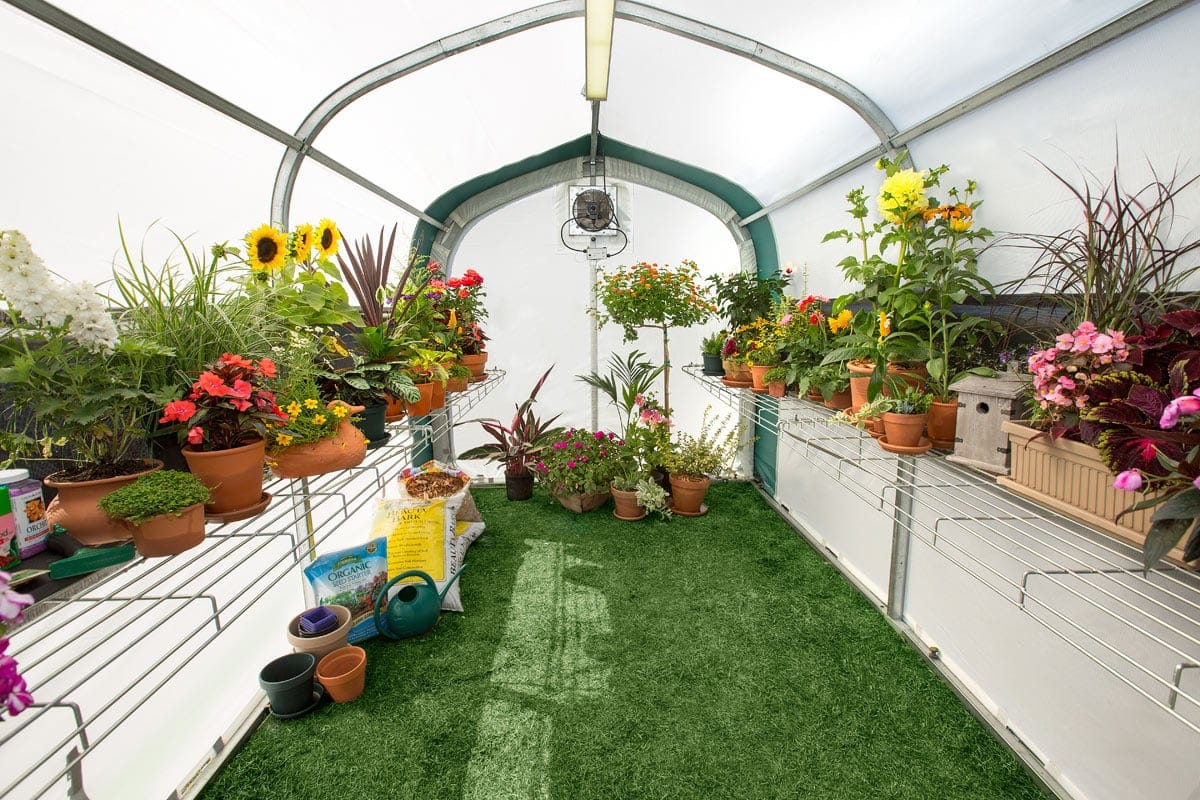
Fiberglass Greenhouses
Another common type of backyard greenhouse are the ones made of fiberglass or acrylic. These materials are fairly inexpensive, helping to keep the costs low.
Advantages
- Fiberglass provides excellent diffused light for your plants – helping the process of photosynthesis.
- It offers better insulation than real glass.
- It does not expand or contract with changing temperatures as much as other materials.
Drawbacks
- Discoloration and wear-and-tear are issues with fiberglass greenhouses, making them difficult to clean and the dirtier they get, the less light gets into the greenhouse to nourish your plants.
- Fiberglass is highly combustible and may expose dangerous materials when cut.
- Most fiberglass greenhouses typically require a foundation and depending on the model and manufacturer, can take days to setup.
Glass Greenhouses
Probably the most commonly known type of greenhouse is the one with glass panels. This type is usually chosen for its visual appeal over function, although it has excellent light transmission and is far easier to clean than fiberglass.
Glass Greenhouses Considerations:
- Single-pane glass greenhouses heat up rapidly during the day, and quickly cool down at night. This may not be the ideal growing condition for your plants.
- Glass greenhouses can also have a ‘magnifying’ effect on plants, exposing starts and seedlings to higher solar amounts.
- Though long-lasting, glass greenhouses are the most fragile of greenhouse structures and often require skilled labor or experienced crews to setup.
Engineered Fabric Structures for Greenhouses
WeatherPort’s backyard greenhouses are the best option for backyard greenhouses! They are designed for a quick setup, offer unmatched long-lasting durability, are custom-designed and engineered to setup and taken down seasonally or installed and left-in-place for year-round gardening!
Additional benefits offered by WeatherPort’s backyard greenhouses include:
- Minimal foundation requirements reduce the need for site preparation – resulting in a faster setup and more time you can enjoy gardening and growing in a greenhouse!
- Install without the need for expensive setup crews and in a fraction of the time compared to fiberglass or glass greenhouses. All WeatherPort buildings are engineered and designed for easy setup. Our easy to follow guides and color-coded frame pieces make building a greenhouse a fast and easy process. Depending on the greenhouse size and configuration, a WeatherPort greenhouse can be setup in as little as 30 minutes.
- Free-span interiors allow for maximum use of interior greenhouse space. No support columns are needed to withstand against the wind and snow loads of your area.
- The engineered fabric membrane used for WeatherPort greenhouses will not rot, is mold- and mildew-resistant, offers a greater abrasion resistance than other PE- and PVC-based fabrics, is UV stabilized (not coated) for prolonged and year-round use in locations with high solar loads, is chemically inert, and exceeds the fire safety requirements outlined in the California Code of Regulations for membrane structures.
- Once setup, WeatherPort greenhouse structures are virtually maintenance free and engineered meet local and international building codes for safety and long-lasting durability!
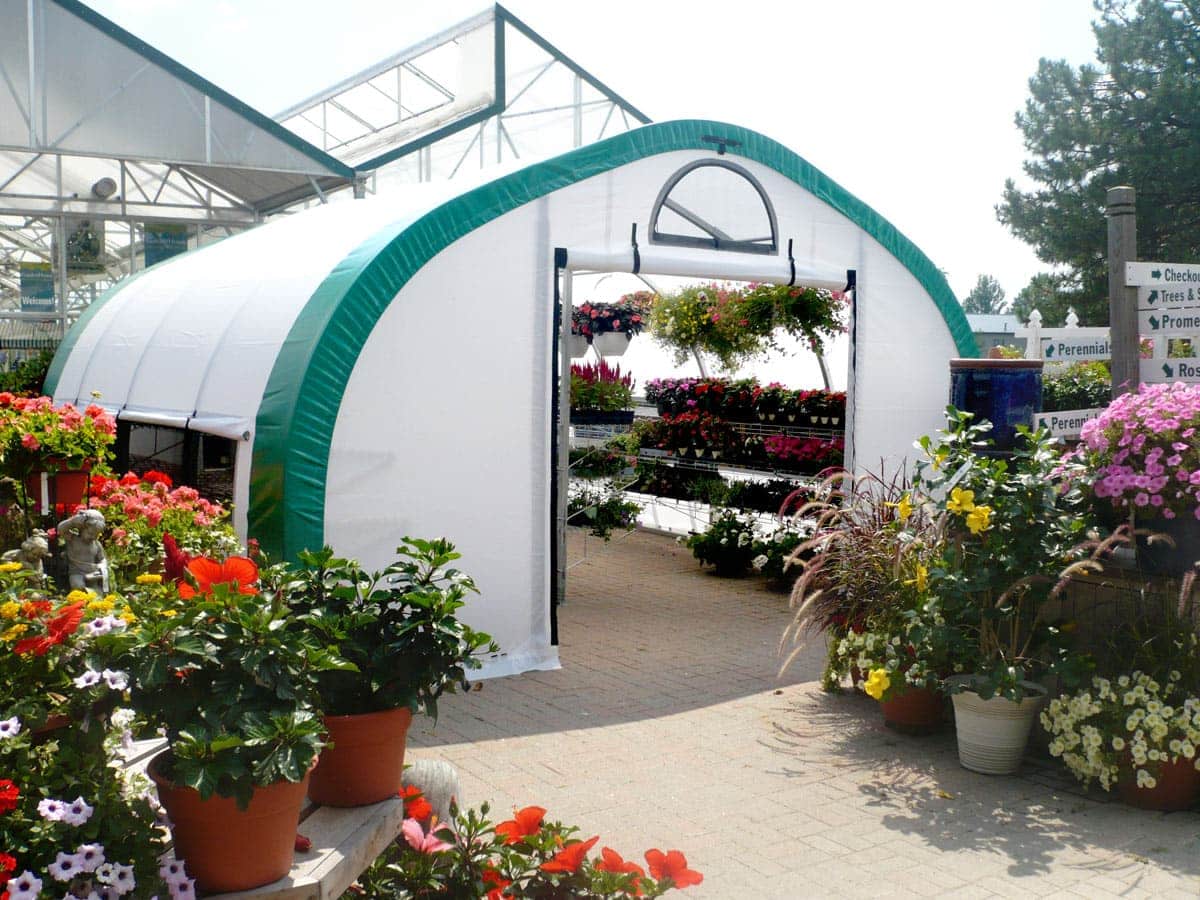
Choose from prefabricated backyard greenhouse kits (8×13, 10×10, 17×20) or custom design a greenhouse that meets your backyard space and growing needs!
- Clear and translucent fabric options available (translucent fabric is engineered to prevent the “magnifying” effect common in glass greenhouses)
- High-strength metal frame systems made of galvanized steel or lightweight aluminum.
- Optional powder coating provides an additional layer of protection against corrosion and comes standard in tan or gray colors!
- Choose from a large selection of window and door options, shelving and hanging systems, ventilation, as well as insulation packages!
[ Contact Us to start designing your custom backyard greenhouse! ]
Essential Tips for Heating Your Greenhouse Through the Winter and Extending Your Growing Season
Your options for greenhouse heating and temperature control will vary depending on the type of greenhouse you choose, since some greenhouse materials are more effective at insulating or distributing light than others.
There are some tried-and-true ways as well as new methods for keeping your greenhouse warm through the cold seasons to maximize production and season length. Here are the ones to consider:
1. Insulate with Horticultural Bubble Wrap and Fleece
A relatively cheap solution for insulating your greenhouse and protecting plants from cold temperatures is to use horticultural bubble wrap. While normal bubble wrap can be used, horticultural bubble wrap is typically more effective because it’s designed with bigger air pockets and offers slightly better insulative properties. It also allows light to enter the greenhouse, and because it is typically made of a thicker plastic material – will last longer. The horticultural bubble wrap can typically be attached the greenhouse structure using clips, tape, ties and pegs.
You can also use horticultural bubble wrap to individually wrap plants that are sensitive to cold temperatures. Place horticultural bubble wrap under pots to prevent frost.
Another option is to use horticultural fleece to insulate your greenhouse at night. Remove the horticultural fleece during the day to give plants the light they need. Similarly, individually wrap plants with horticultural fleece to protect plants from damaging temperatures.
Special attention should be given to thoroughly clean your greenhouse and gardening tools before winter to prevent botrytis disease from growing and damaging your award-winning plants! Try these helpful greenhouse tips for winter growing:
- Water plants from the bottom.
- Place compost on the top to insulate roots from cold temperatures.
- When outside temperatures are warm enough, open your greenhouse and give your plants some fresh air.
- Space plants so there is plenty of air flow around them.
- Keep plants that are prone to botrytis away from the sides of the greenhouse during the winter.
- If your greenhouse isn’t equipped with a fan, use an electric standing fan to help keep air moving inside your insulated greenhouse.
- Use a solution of 10% bleach to disinfect and clean gardening tools after each use.
2. Use Electric Fan Heaters Efficiently
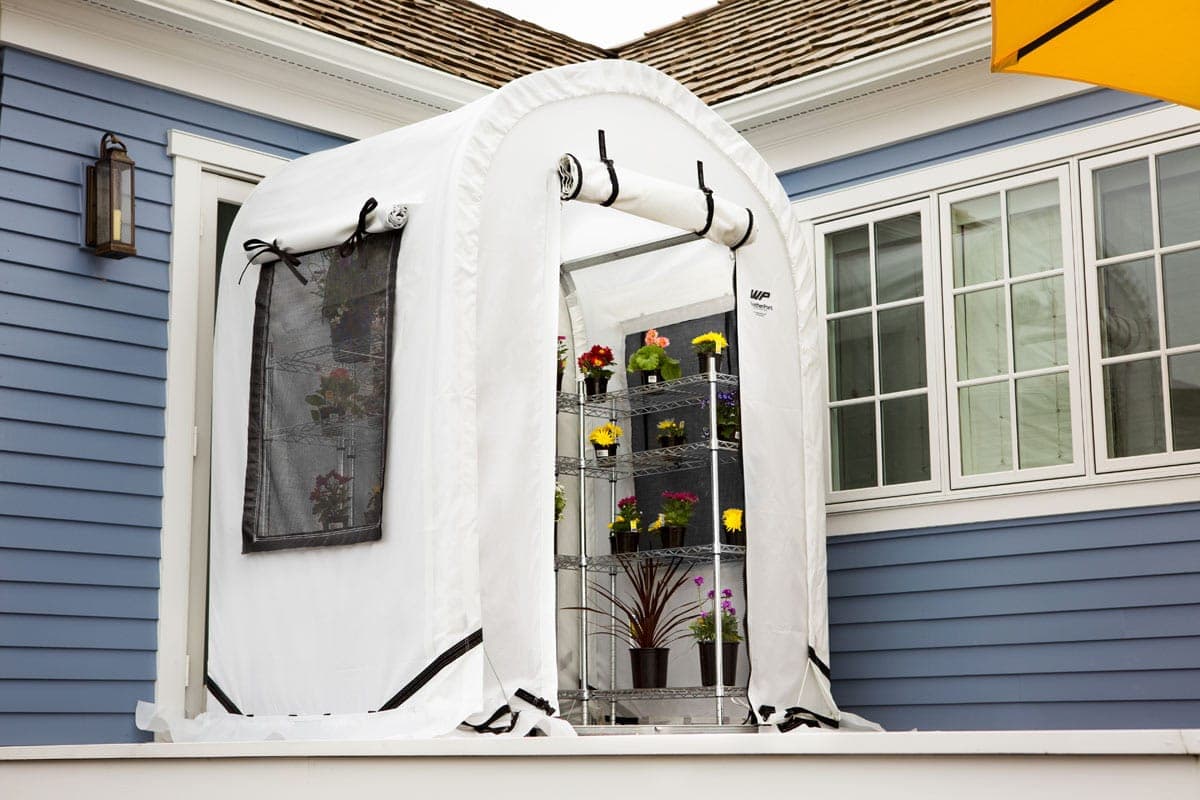
One of the more common methods for heating a greenhouse through the winter is electric fan heaters. Electric fan heaters are easy to find, come in a wide range of sizes, heating capacities, shapes and setting options to keep the warmth evenly spread throughout the greenhouse structure.
The added benefit of electric fan heaters is that they don’t release extra moisture into your greenhouse like paraffin or propane systems will, which could impact the healthy grow cycles of some sensitive plants.
The downside of electric heaters is that they are typically not very energy efficient and can add significant cost to your energy bill. You can manage this with a thermostat and automated temperature control, but it’s still pretty expensive.
Another eco-friendly and more sustainable option to heat your greenhouse is to use solar panels and a battery backup system to power your electric fan heater. These systems can be expensive and may require an electrician to install.
Here are some helpful tips for heating your greenhouse with electric fan heaters:
- Set an appropriate temperature of around 37°F for standard plants or 45-50°F for more temperature sensitive plants.
- Place electric fan heaters in an open, central location within the greenhouse away from any sources of water and not blowing hot air directly over plants.
- Divide the space within your greenhouse using partitions to only heat areas that need it.
- Use horticultural fleece to further protect plants during winter storms and cold snaps.
- Don’t forget to ventilate your greenhouse! The additional warmth is not only good for your plants, but can increase humidity and moisture levels inside the greenhouse and create the perfect environment for fungal diseases.
3. Harness Thermal Mass for Natural Heating
Perhaps the most eco-friendly and low cost solution to heating your greenhouse during the winter is to use thermal mass to create a heat sink. Because water has such a high heat capacity, it is the best solution for creating a heat sink that warms up during the day and then releases the heat at night. Simply place large barrels or containers in your greenhouse where they will get direct sunlight and fill with water.
If your greenhouse is not equipped with shelving systems, you can use the tops of the water barrels for seedling trays or warm weather crops. The rising warm air from the barrels of water at night will help protect from cold temperatures.
Other materials can be used. Stone or concrete are good options, but only hold half the amount of heat energy as water. Soil is another choice, but only holds a quarter of the heat energy as water.
A more in-depth variation of this idea involves burying tubing under the greenhouse and using a fan to push warm moist air through the tubing during the day, warming up the soil, and then at night pushing cold air into the tubing where it condenses and releases heat. This system is called a “climate battery” for greenhouses. Obviously, it requires a great deal more planning and designing, purchasing additional materials, and site excavation work to install.
4. Consider Geothermal Heating Systems
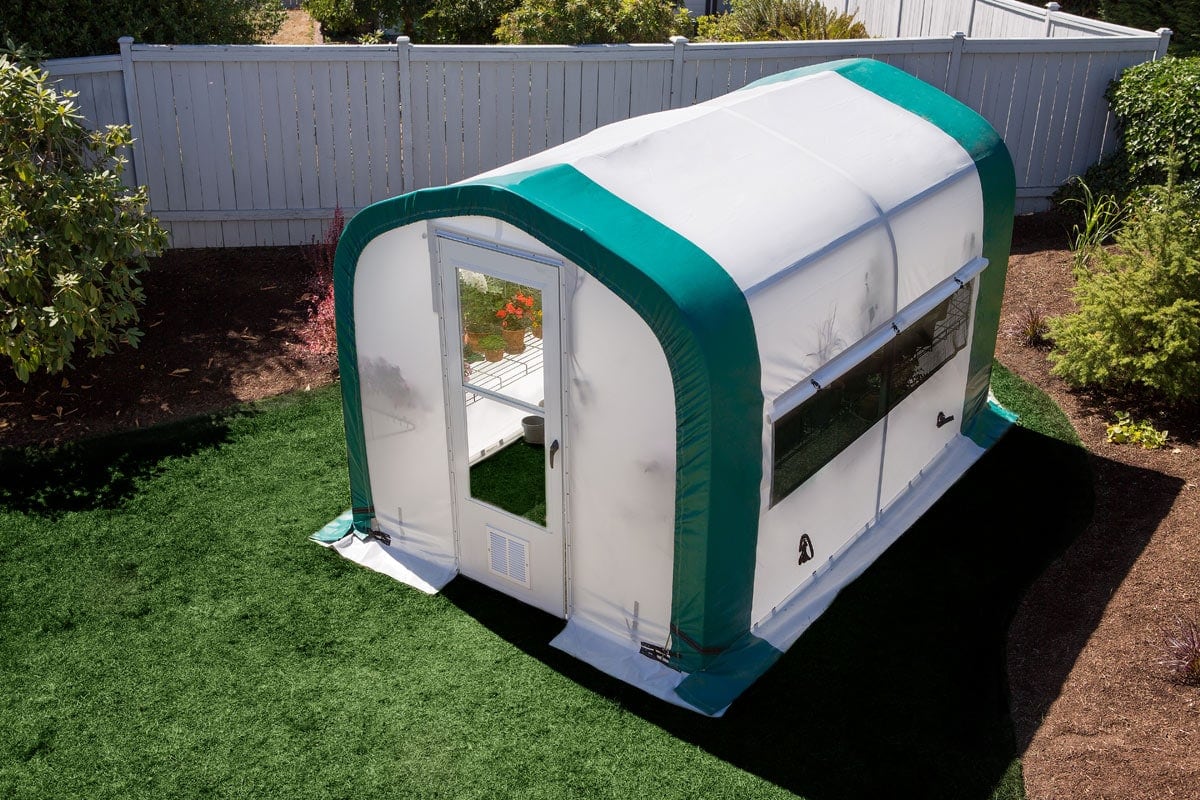
When accessible, geothermal resources can offer an energy-efficient alternative for heating your greenhouse year-round. While there are many geothermal systems and designs now available, this system is not likely to be considered by most backyard gardeners due the initial cost.
The payback for geothermal systems is typically 7-10 years. In some cases, it can be as little as 3-7 years, depending on the cost to purchase and install a greenhouse geothermal system, as well as the location, environmental conditions, and geothermal source.
When discussing geothermal sources, there are typically three temperature ranges discussed:
- Low Temperature Geothermal Systems for Greenhouses: Similar to the climate battery, low temperature geothermal systems use the low-grade soil heated air at a depth of 5 to 6 feet for heating a greenhouse during winter months and cooling a greenhouse during the summer. Though dependent on ground and environmental conditions, temperatures at this depth average about 50˚F. Air to air, air to water, water to water or water to air heat pump systems are also used.
- Medium Temperature Geothermal Systems for Greenhouses: Ground water, springs, and thermal wells heated to 140-300˚F can be used for heat. Water from such sources is usually distributed throughout the greenhouse by fin radiation or root-zone heating.
- High Temperature Geothermal Systems: The steam from geysers can reach temperatures greater than 300˚F. Though not currently used for greenhouses, these geothermal sources are used for generating power.
Have a Suggestion or Helpful Tip for Year-Round Growing in a Greenhouse?
We hope this guide has provided useful information how to heat your greenhouse and how to care for plants during the winter so you can enjoy greenhouse gardening grow year-round!
We understand there are lots of options to consider. Whether you are a beginning gardener, setting up your greenhouse for the first time, or an experienced gardener with many years of growing experience, we want your greenhouse gardening experience to be enjoyable!
If you have a suggestion or a helpful tip for fellow greenhouse gardeners interested in growing year-round, please let us know!
Happy gardening from the WeatherPort Greenhouse team!

Choose a Long-Lasting, Weather-Resistant Greenhouse
WeatherPort greenhouse structures are the perfect backyard greenhouse solution! You can choose from one of our pre-made greenhouse kits or custom design your very own and unique greenhouse by contacting us today.
A WeatherPort design specialist will work with you to discuss the available options, design a greenhouse to protect your plants as well as withstand the conditions of your specific location. Our greenhouse structures are long-lasting and have provided thousands of customers around the world with decades of year-round growing!
WeatherPort® is a brand of high-quality fabric buildings from Alaska Structures®. If you are interested in learning more about our fabric buildings and remote camp systems please contact us by calling +1-907-344-1565 or completing our online form to request a consultation.










































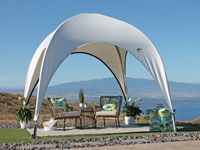




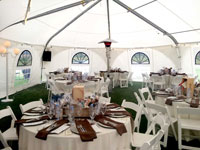

































Leave a Reply